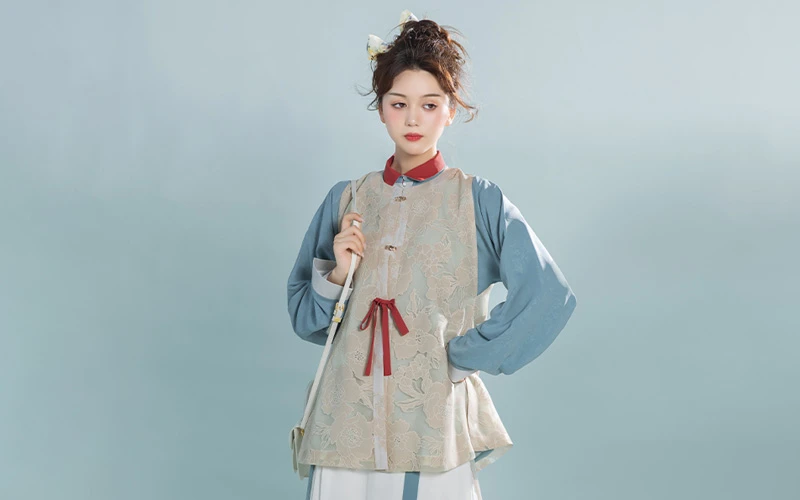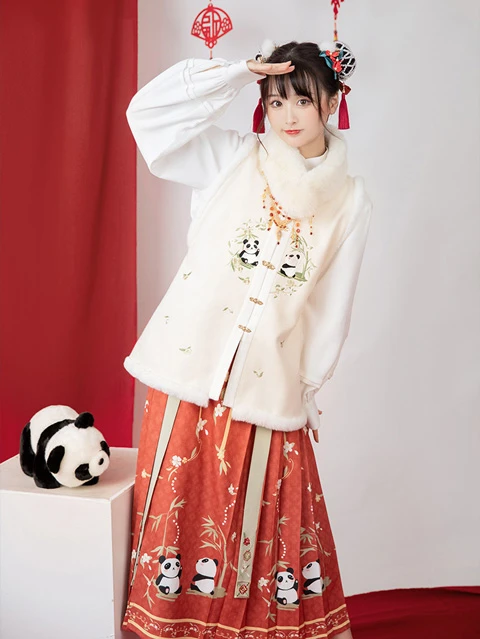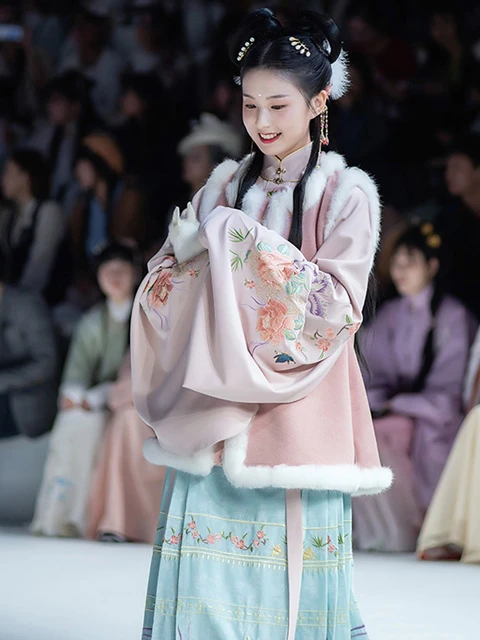In winter, Hanfu lovers have turned their attention to the Ming dynasty style hanfu outfit.
The Liling (立领, standing collar) has become the mainstay in the Ming style hanfu, and has become the most popular among the girls, together with the dignified and generous Mamian Qun (马面裙, horse face skirt), a set of elegant Ming hanfu styling is completed.
But in winter, want to wear layers and not show bulky, Bijia (比甲) item can not be missed.
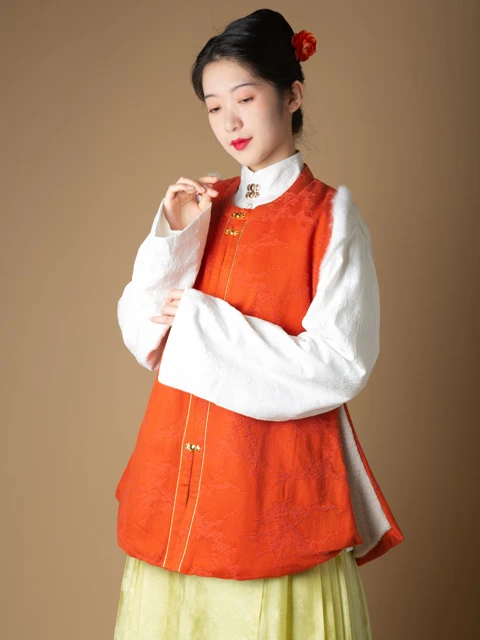
Bijia is a sleeveless, collarless vest with openings on both sides of the lapel and below the knee. Its style is usually longer than later vests, usually up to the hips or to the knees, and some are longer, less than a foot above the ground.
This style of clothing was originally a hanfu style from the Song Dynasty, with a long sleeveless blouse, also called a "Beixin (背心)". Later, it was introduced to Mongolia.
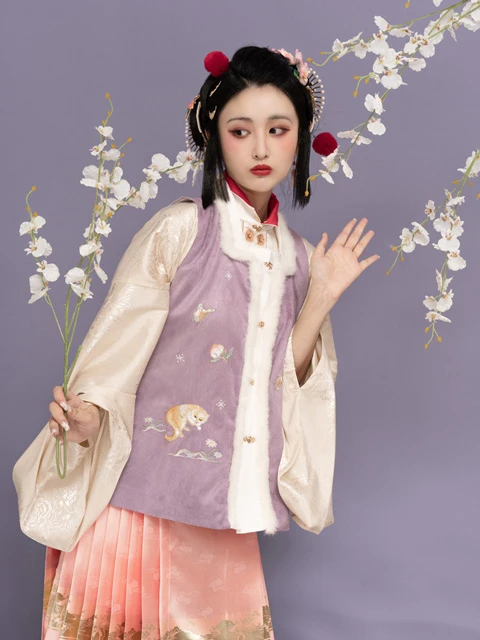
Bijia is generally worn outside the large-sleeved shirt, or coat, and skirt underneath, which can be easily matched to show a sense of layering. By the late Mongolian Yuan, the Han Chinese women in the north especially like this style.
Since the Yuan Dynasty has buttons, it is also used in the Bijia, so wearing more conveniently, fast, tied tightly, is a new change in traditional Chinese clothing. Bijia in the Ming Dynasty generally has five metal buttons, mostly worn by the nobility.
Winter Bijia with (inside to outside)
Ao (coat) / Mamian Qun (skirt) & pleated skirt + Long & short Bijia (can be matched with fur collar) + Doupeng
TIPS:
- The color should not be too bright: light color + multi-color is a more secure color, the highlight of only taking a single product is appropriate.
- Can be decorated with a thin belt at the waist to avoid looking bulky.
- In the whole set of hanfu styling, Bijia's warmth is relatively low, in fact, it also depends mainly on the Liyi or Zhongyi.
